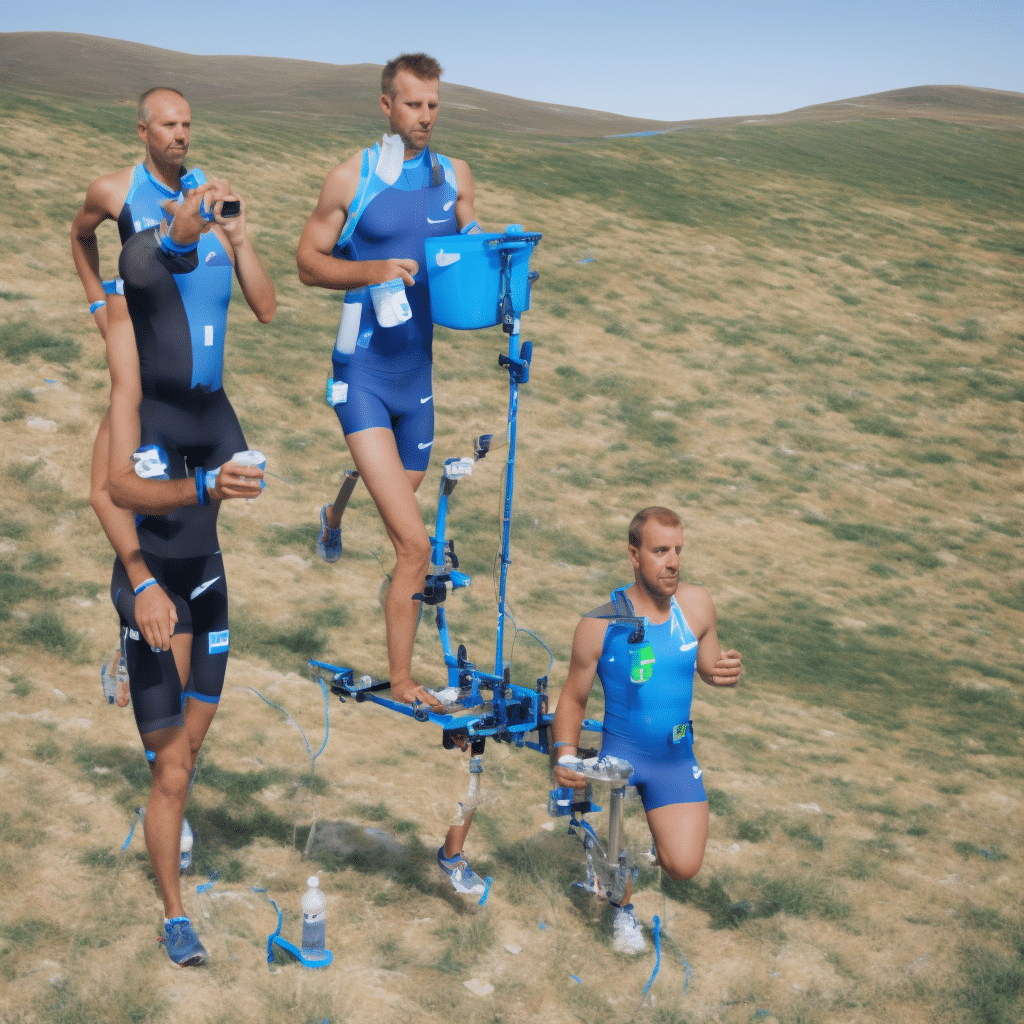As all endurance athletes understand, proper hydration is not simply a matter of downing a few glasses of water before a race. It’s a complex balancing act that has to consider factors like sweat rate, electrolyte levels, and the environmental conditions for the event. The risks of improper hydration are significant, from reduced performance to severe health consequences. In recent years, new technologies and methods have emerged that offer more accurate and convenient ways to track hydration levels. In this article, we will delve into these innovative methods and how they can benefit endurance athletes.
Wearable Sweat Analyzers
Biotech companies and sports scientists have been working together to develop wearable devices that can analyze sweat in real-time. These devices use a range of sensors to measure factors like sweat rate, sweat composition, and skin temperature.
A lire en complément : How Can Customized Rehabilitation Programs Speed Up Recovery from Sports Hernias?
The benefits of wearable sweat analyzers are manifold. For one, they provide real-time feedback, allowing athletes to adjust their hydration strategy on the go. They also produce highly individualized data, accounting for the fact that sweat rates and electrolyte losses can vary widely from person to person.
Devices like the Gatorade Gx Sweat Patch and the Nix Biosensors have made this technology accessible to athletes of all levels. These easy-to-use patches adhere to the skin and change color based on the athlete’s hydration levels. The information can then be read by a smartphone app, providing immediate feedback.
Sujet a lire : What Strategies Can Facilitate Skill Acquisition in Complex Team Sports Like Rugby?
Hydration Monitoring Apps
The rise of smartphone technology has provided endurance athletes with an array of apps designed to help them monitor their hydration status. These apps generally require users to input information about their activity level, environmental conditions, and fluid intake.
Apps like iHydrate and Waterlogged provide reminders to drink based on your personal hydration needs. Other apps, like Urine Color Hydration Chart, help athletes estimate their hydration levels based on the color of their urine. While these apps do not offer the real-time, personalized feedback of wearable sweat analyzers, they can be a useful tool in an athlete’s hydration strategy.
Smart Water Bottles
Smart water bottles are another technology that has emerged in recent years. These bottles connect to smartphone apps and provide reminders to drink. Some models, like the DrinKup Bottle, also measure the amount of water consumed and provide feedback based on the user’s personal hydration needs.
In addition, some smart water bottles are equipped with temperature sensors that can alert users when their water is at the optimal temperature for hydration. They can even integrate with other fitness devices, allowing for a comprehensive view of an athlete’s hydration, nutrition, and performance metrics.
Advanced Blood Tests
For those looking for a more comprehensive insight into their hydration status, advanced blood tests can provide a wealth of information. Certain key biomarkers can indicate dehydration, such as elevated levels of blood urea nitrogen (BUN) and hematocrit.
While regular blood tests are not feasible for most endurance athletes due to their invasive nature, new methods have made it easier to monitor these biomarkers. Companies like InsideTracker offer at-home blood tests that measure key hydration biomarkers. With such detailed insights, athletes can adjust not only their hydration strategy, but their overall diet and training regimen.
Hydration Sensors
Perhaps the most futuristic method of hydration tracking is the use of hydration sensors. These are small devices implanted under the skin that measure hydration levels in real-time.
Companies like Eccrine Systems are pioneering this technology with their non-invasive, wearable devices that use sweat data to track hydration. Though still in the early stages of development, such technology has the potential to revolutionize hydration monitoring, providing a continuous, accurate readout of hydration status without requiring any user input.
In conclusion, athletes now have a plethora of innovative methods to track their hydration levels. From wearable sweat analyzers to smart water bottles, hydration monitoring apps to advanced blood tests. As technology continues to advance, it’s likely we’ll see even more sophisticated ways for athletes to ensure they’re adequately hydrated for optimum performance.
Combining Technologies for Optimal Hydration
The true advantage of these innovative hydration tracking methods is seen when they are used in combination. For example, an athlete may use a wearable sweat analyzer to understand their individual sweat rate and electrolyte loss, a hydration monitoring app to keep a track of their fluid intake and a smart water bottle to ensure they are drinking the required amount of water at regular intervals.
On days of intense training or competition, an advanced blood test can provide a comprehensive snapshot of their hydration status, allowing them to make necessary adjustments in their hydration strategy. However, the accuracy and convenience of these tools will depend on the individual athlete’s needs, the sport they participate in, and the conditions in which they are exercising.
For example, a cyclist training in a humid environment will likely benefit more from a wearable sweat analyzer that can provide real-time feedback on sweat rate and composition. On the other hand, a long-distance runner might find a hydration monitoring app useful for reminding them to drink at regular intervals during their training sessions.
The key is to use these tools to understand one’s individual hydration needs and to tailor a hydration strategy accordingly. With the right combination of these technologies, athletes can ensure they are optimally hydrated and primed for peak performance.
The Future of Hydration Tracking
As the field of sports science continues to evolve, we can expect even more groundbreaking technologies to monitor hydration levels in endurance athletes. Hydration sensors that can be implanted under the skin are still in their early stages of development but hold immense potential to revolutionize hydration monitoring.
These sensors could provide continuous, accurate feedback on hydration status without requiring any user input. Imagine a world where an athlete’s hydration levels are monitored 24/7, with real-time feedback delivered through a smartphone app or even a heads-up display in their eyewear.
Further, the integration of AI and machine learning with hydration tracking technologies could yield predictive analytics. Athletes may get alerts predicting their hydration needs based on a variety of factors such as their past hydration data, the intensity of their training schedule, weather conditions, and more.
In conclusion, the future of hydration tracking for endurance athletes looks promising, with a host of new technologies on the horizon that can provide even more accurate, personalized, and convenient ways to ensure optimal hydration. As we move forward, it’s critical that athletes, coaches, and sports scientists embrace these technologies and incorporate them into their training regimens to maximize performance and safety.










